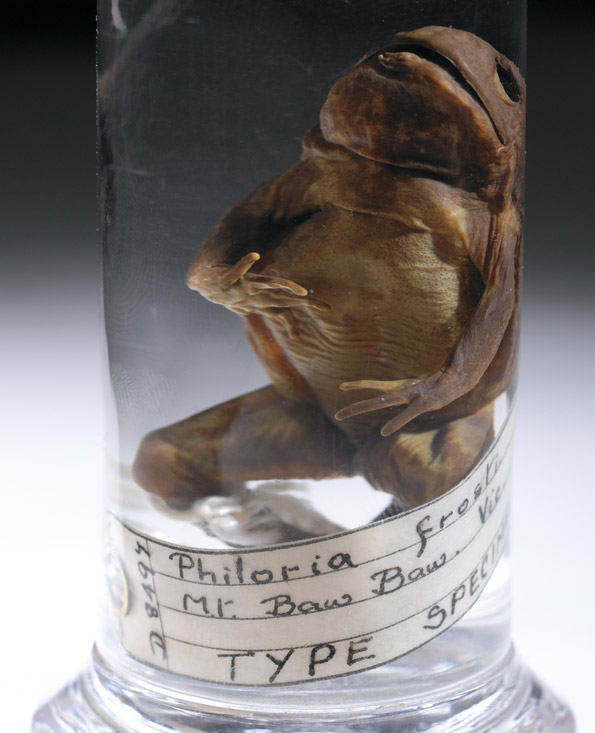 Baw Baw frog
Baw Baw frog
TLF ID R6868
This is a colour photograph of a preserved Baw Baw frog ('Philoria frosti'). It is a museum specimen preserved in a transparent container. Museum cataloguing labels are visible.
